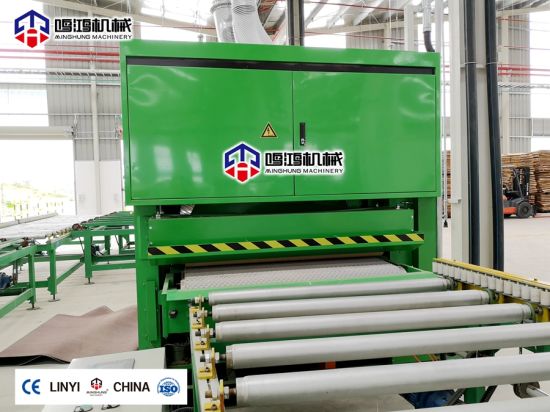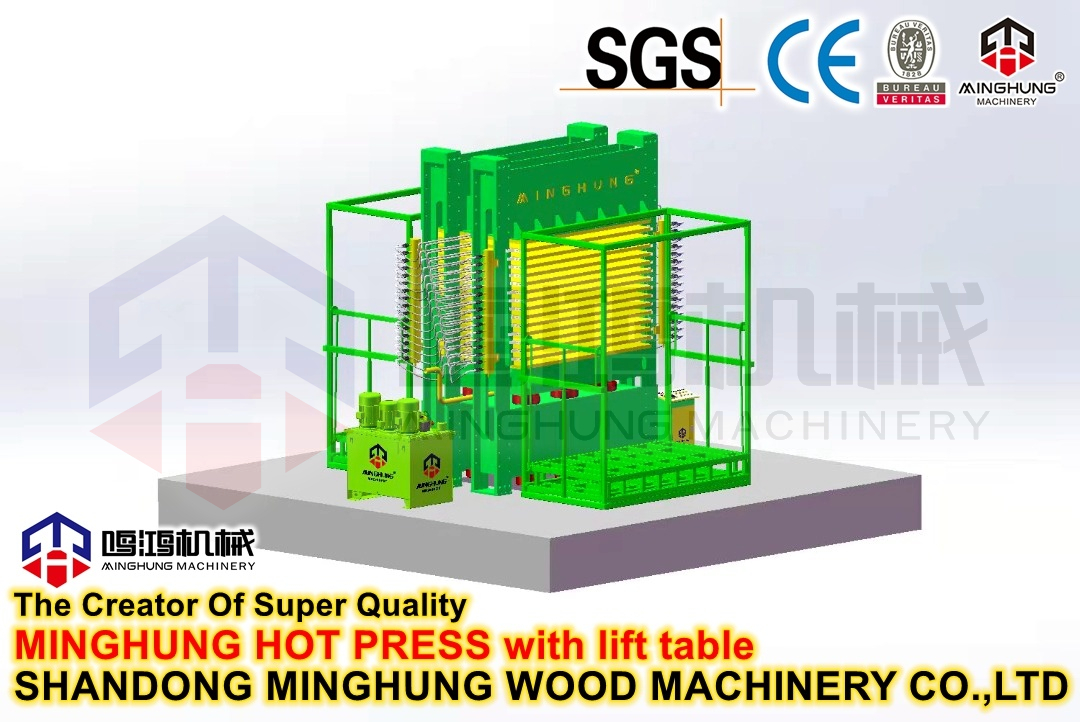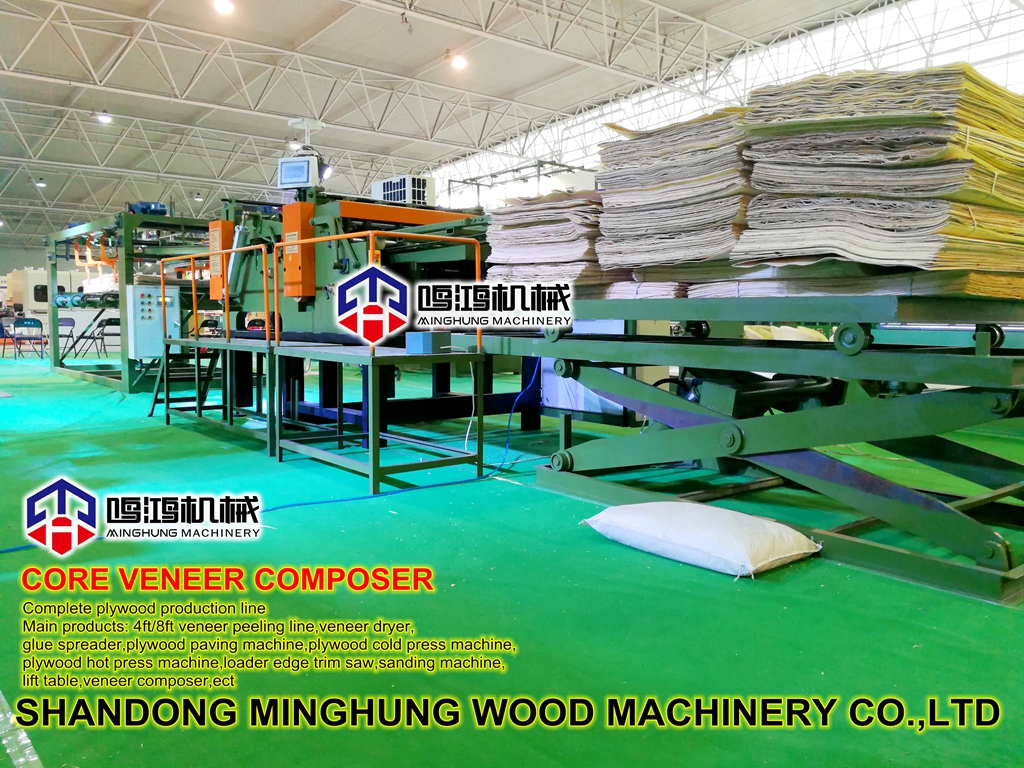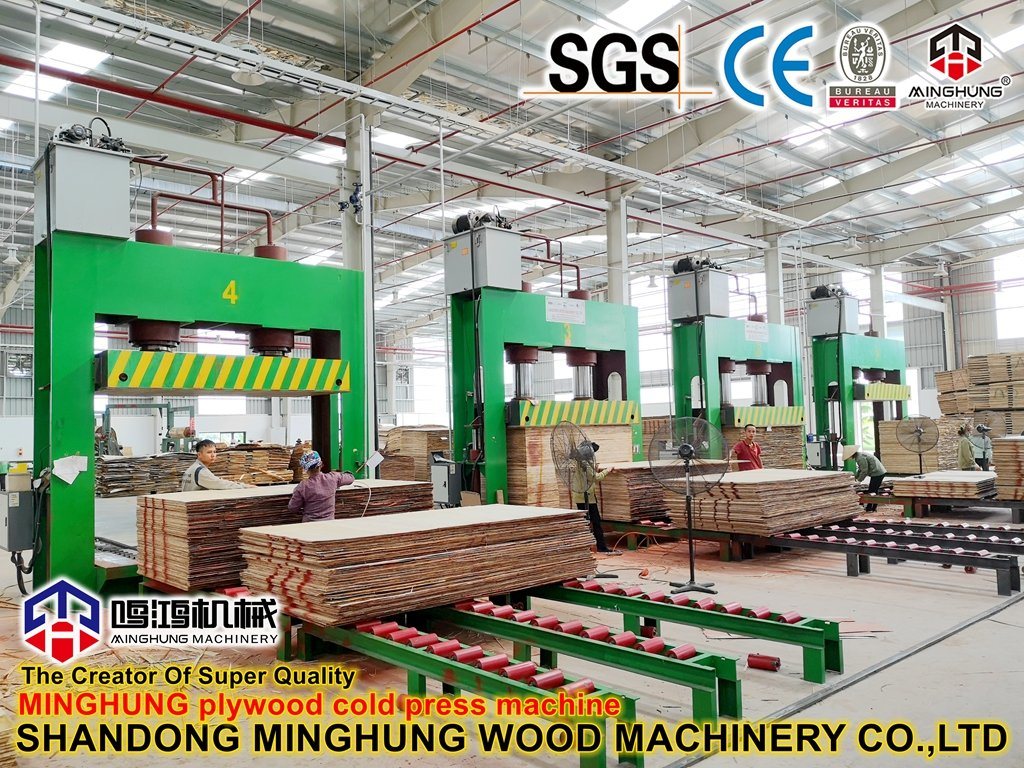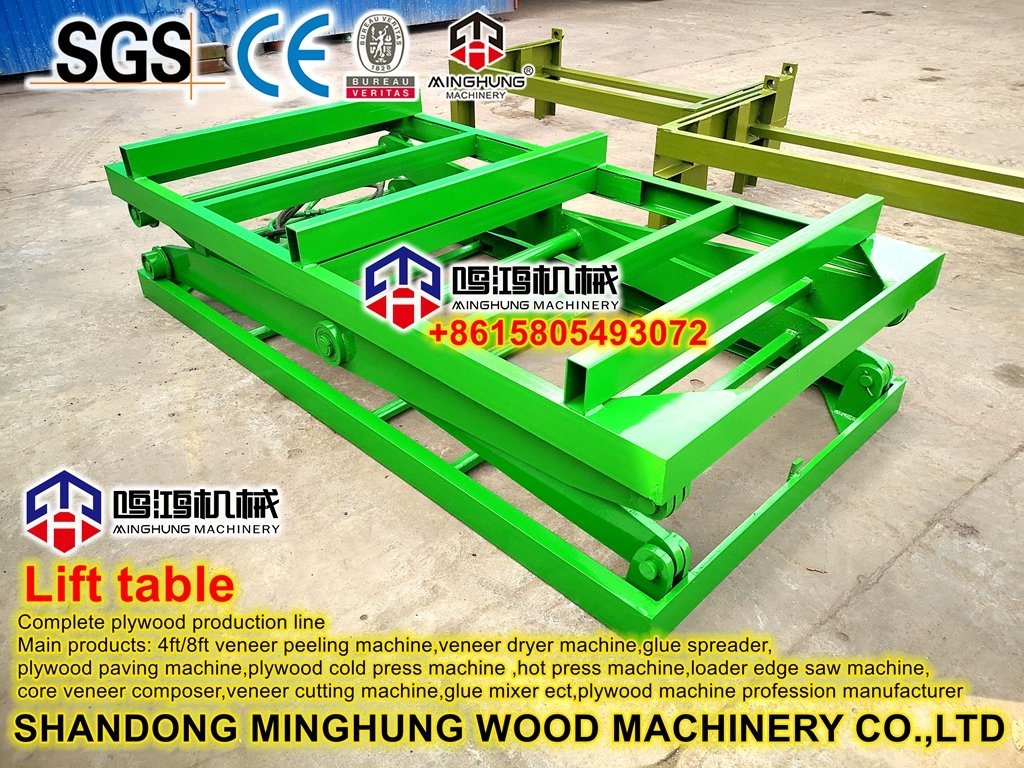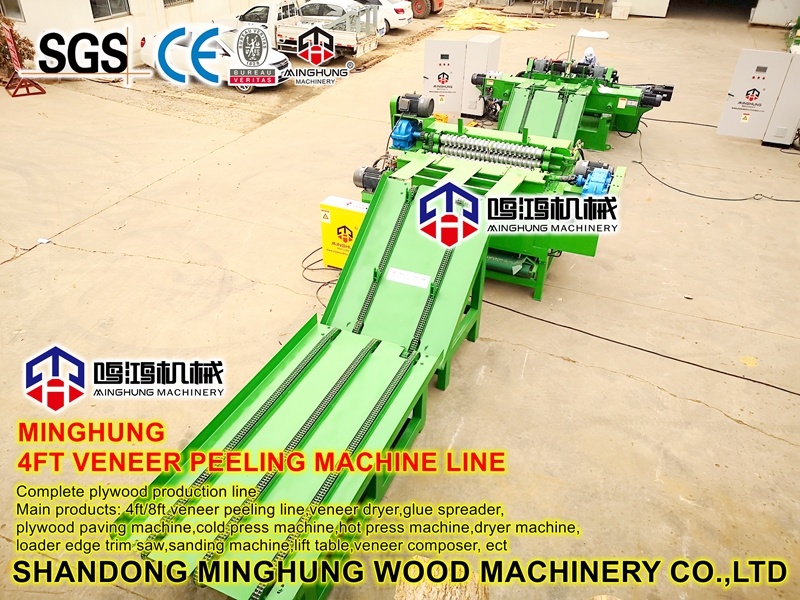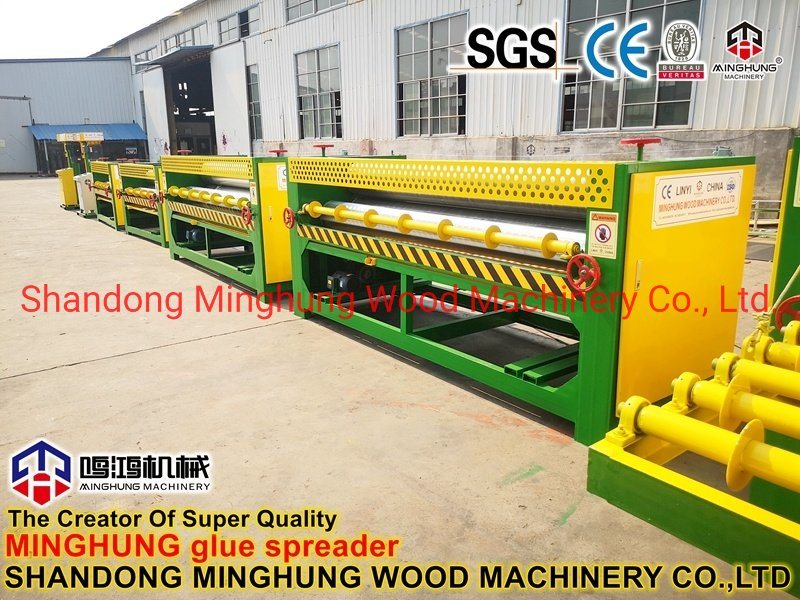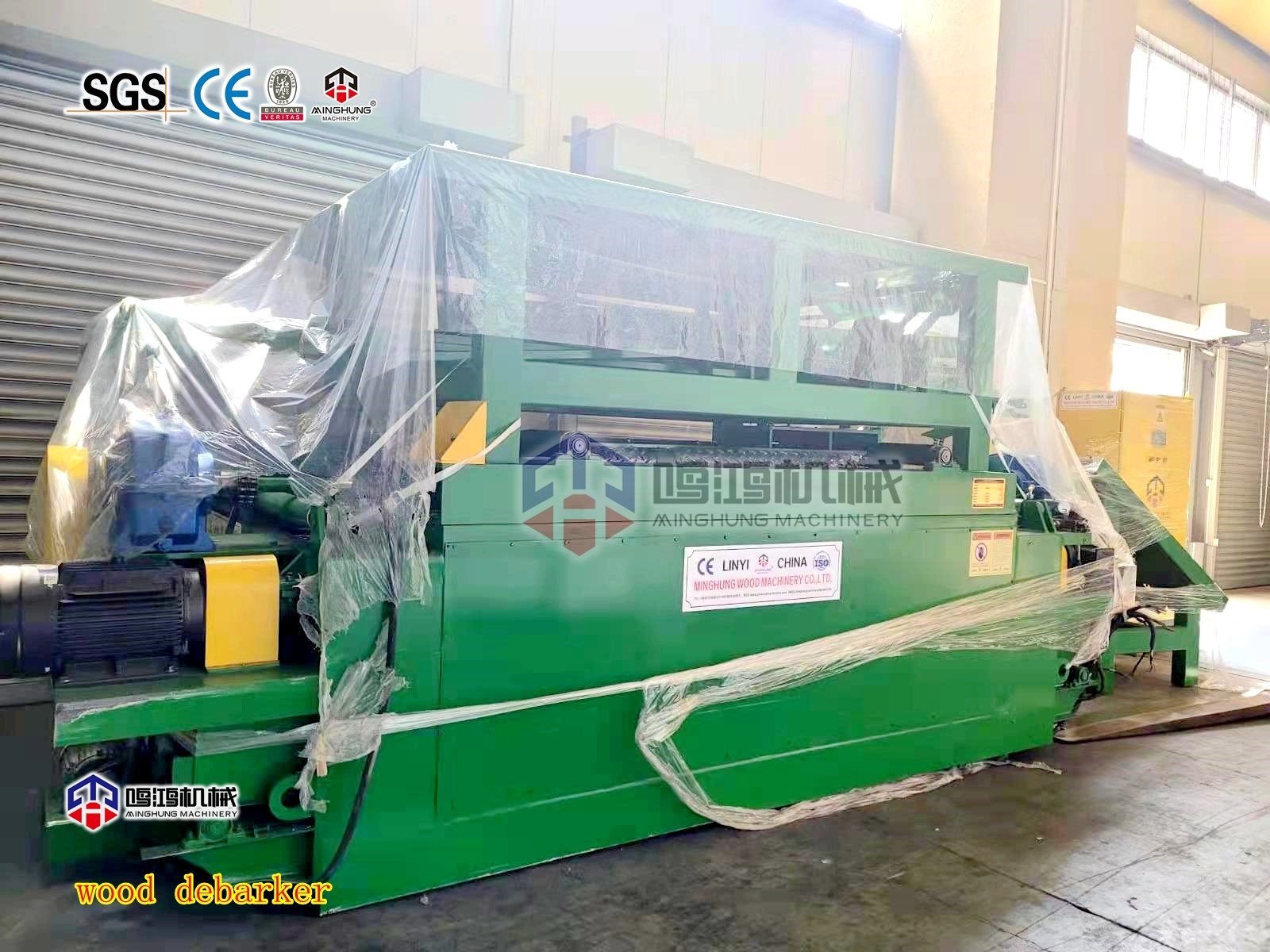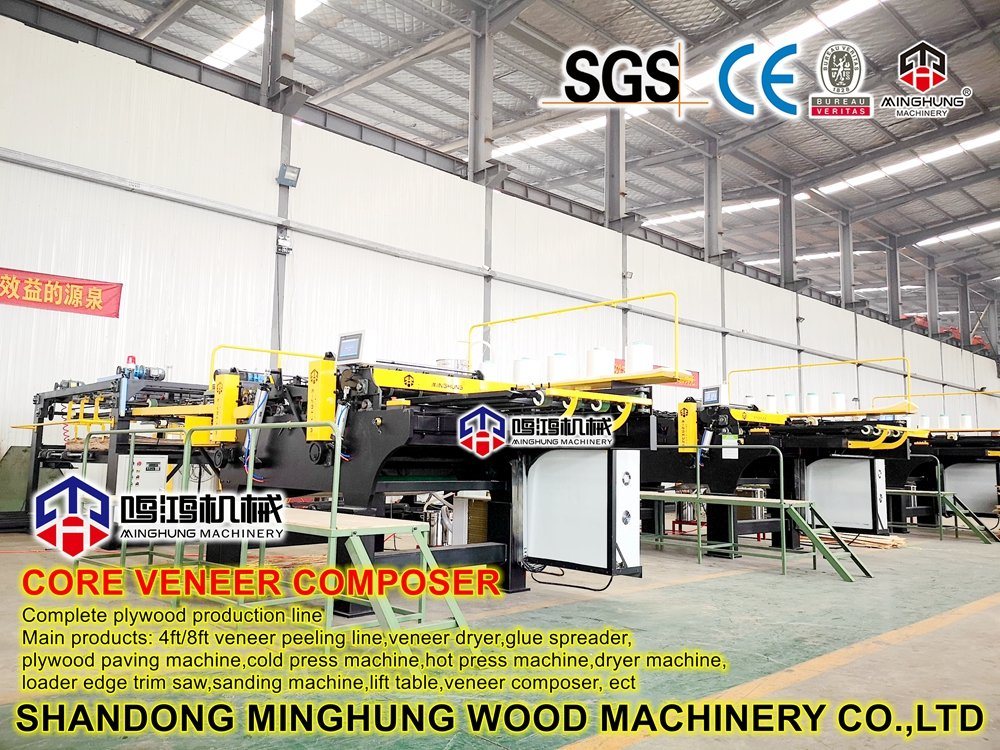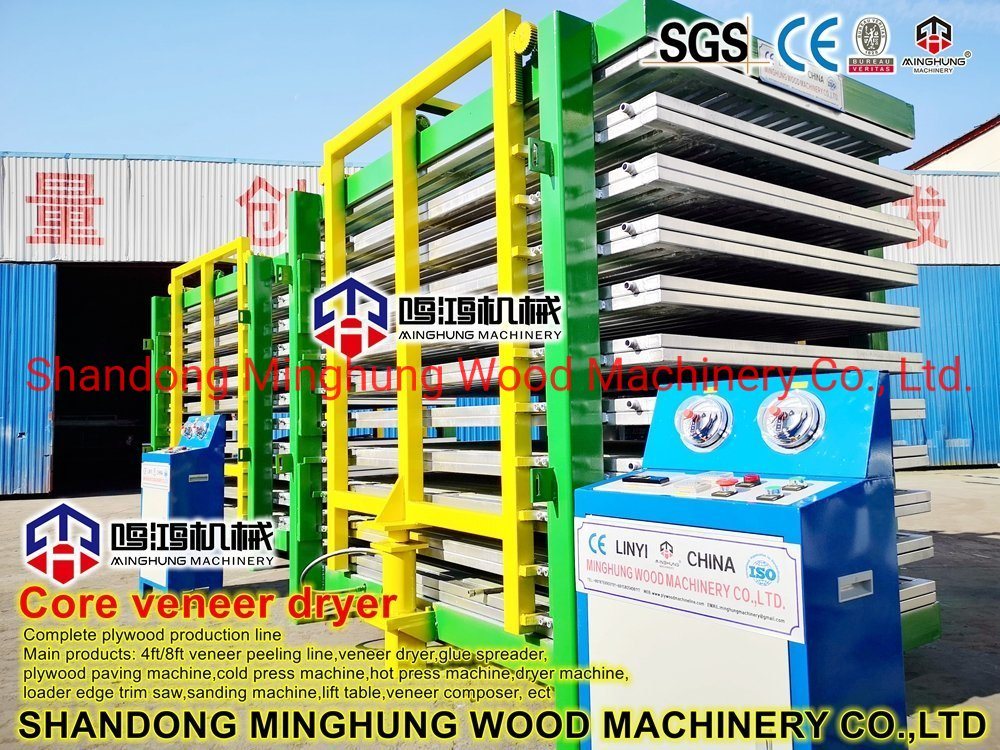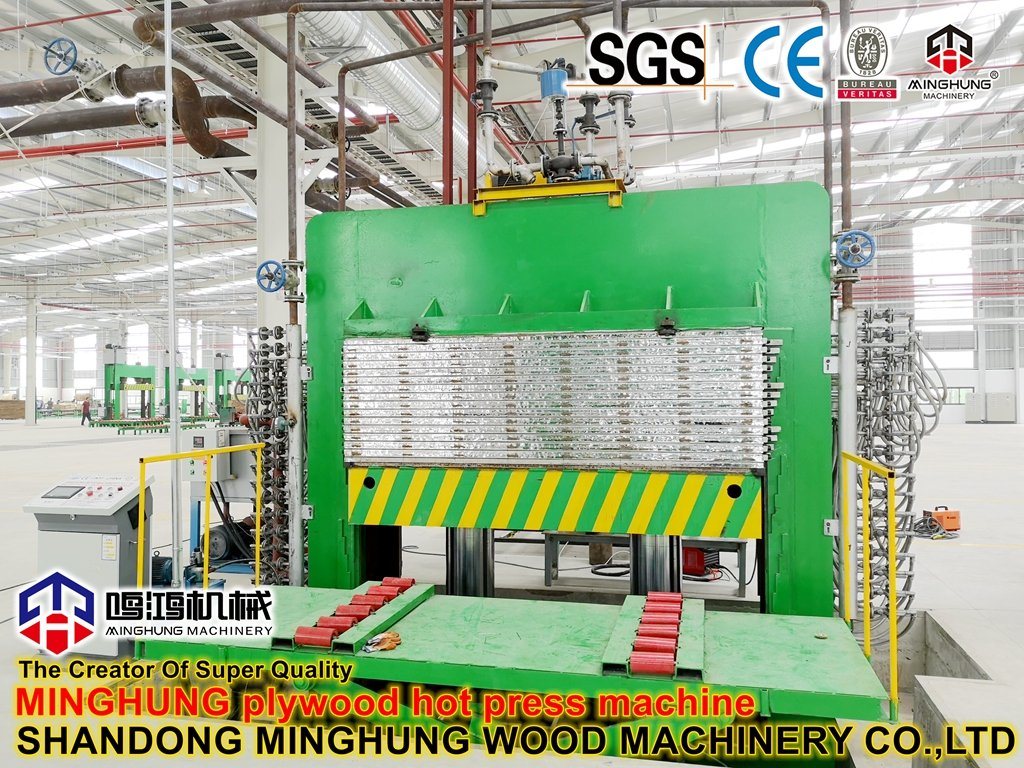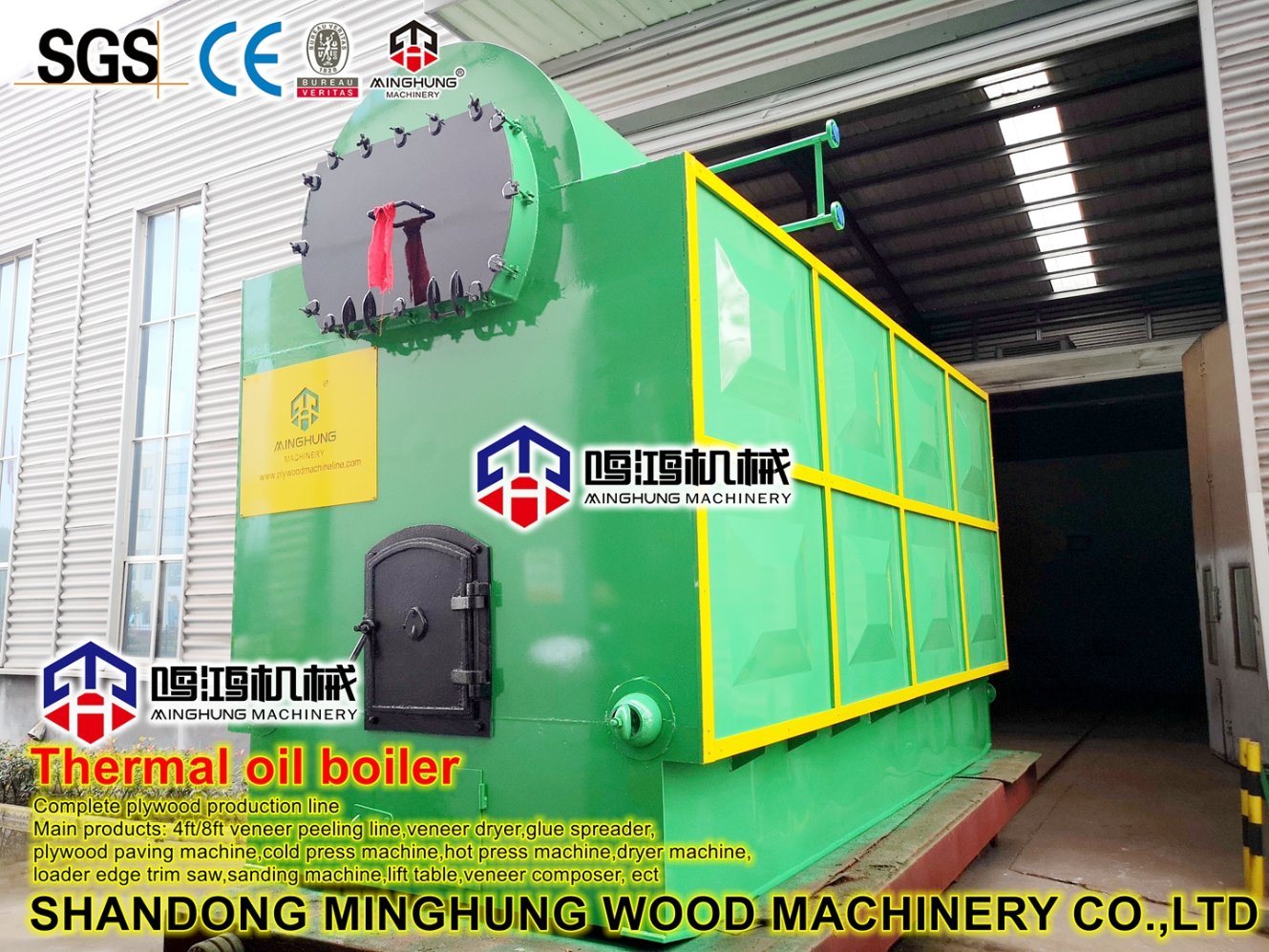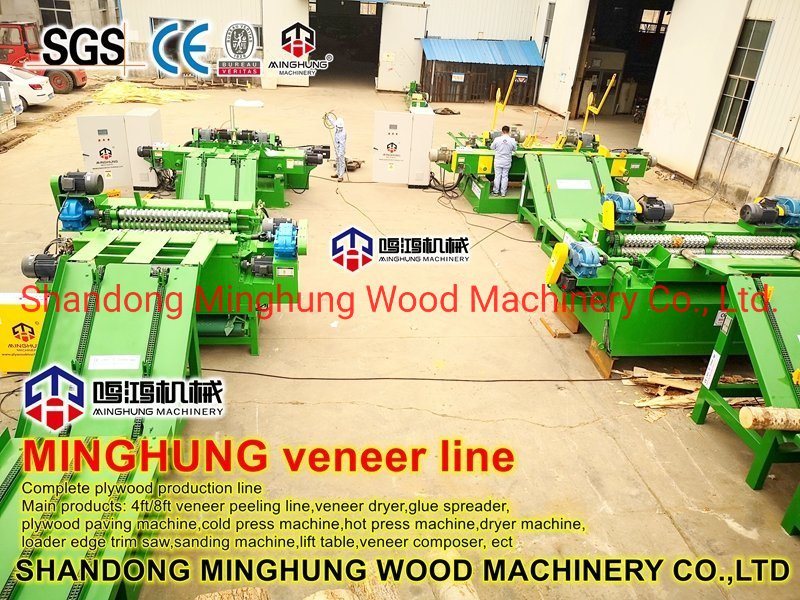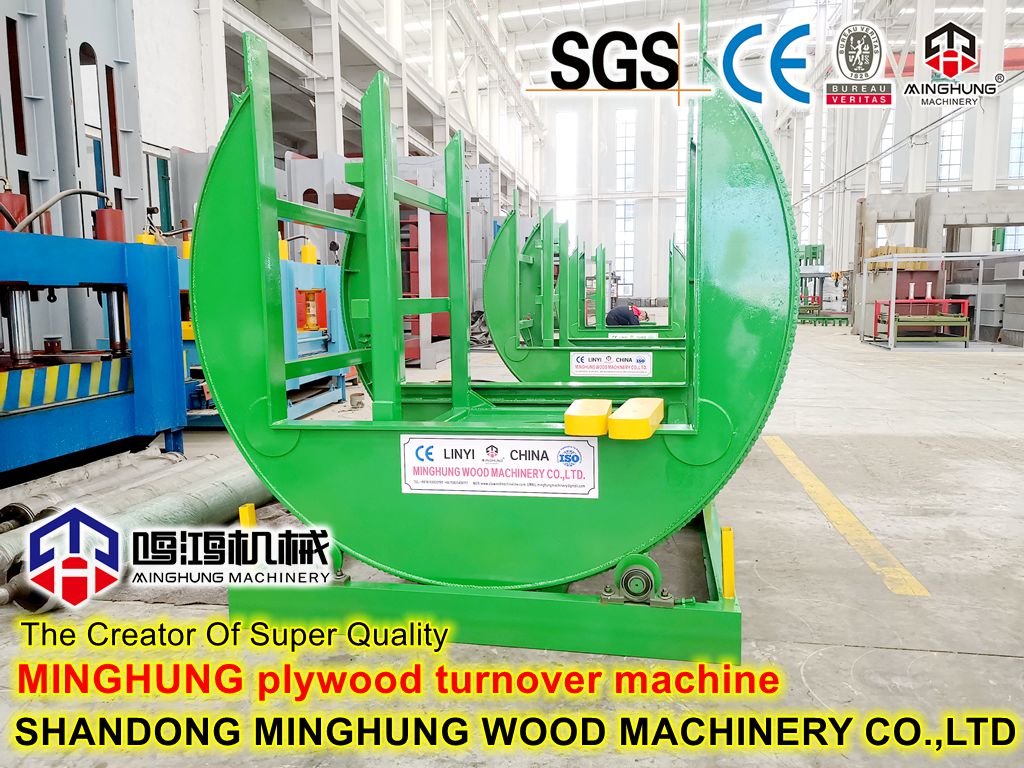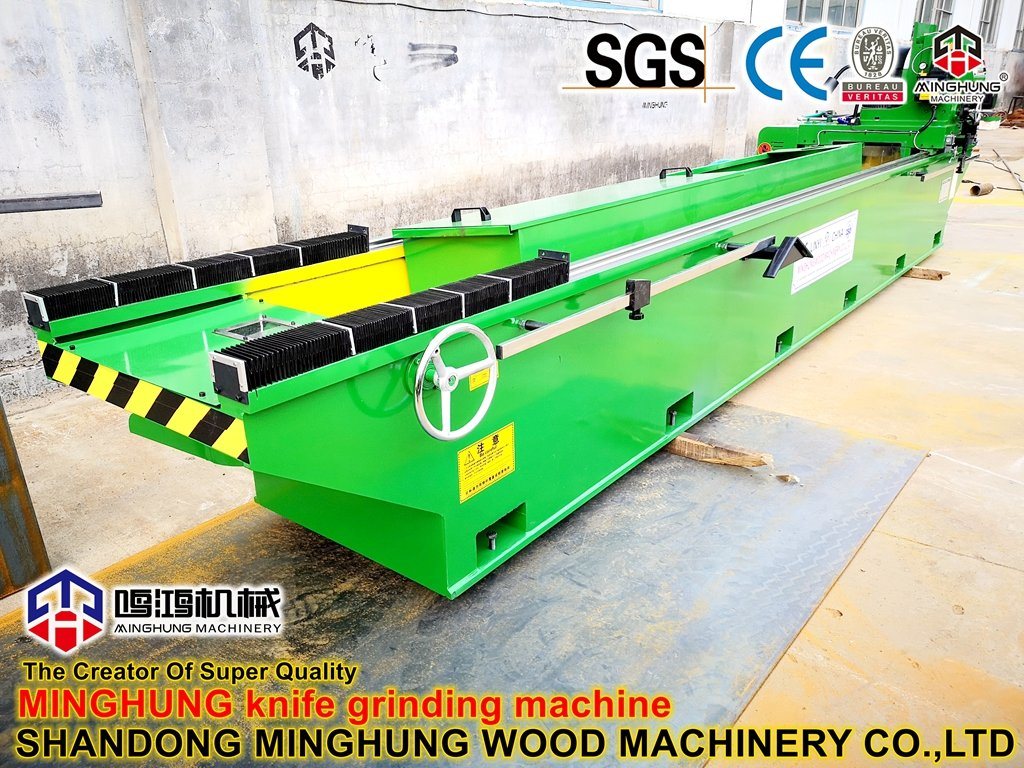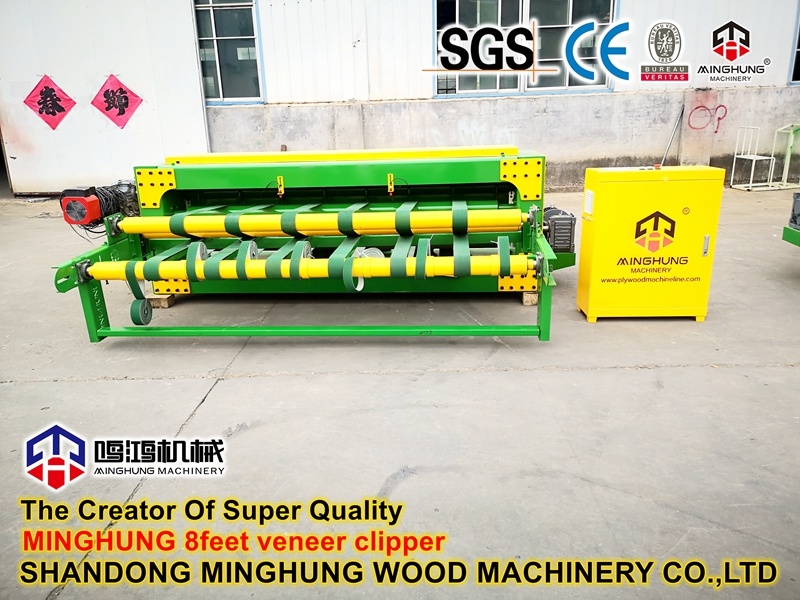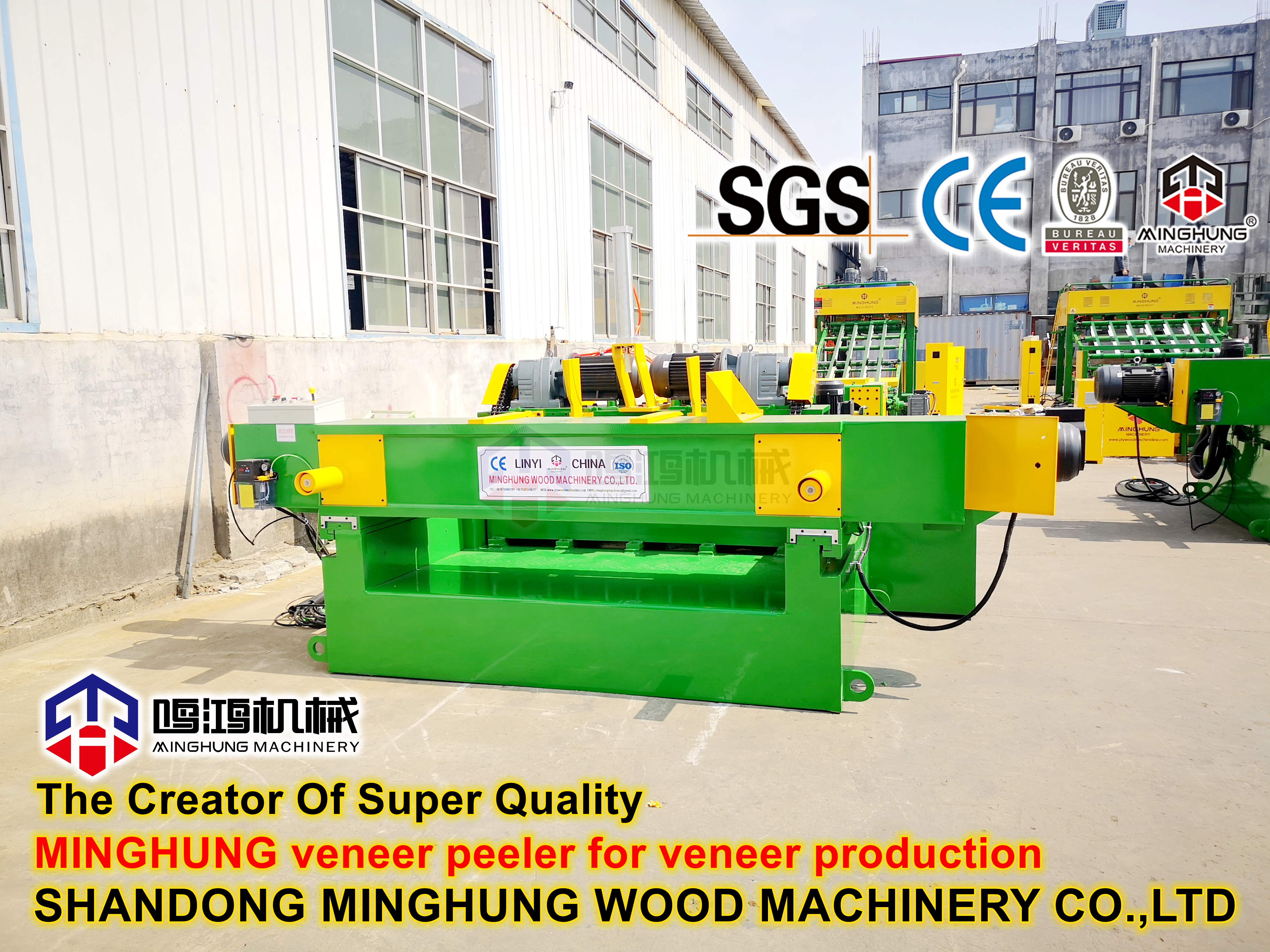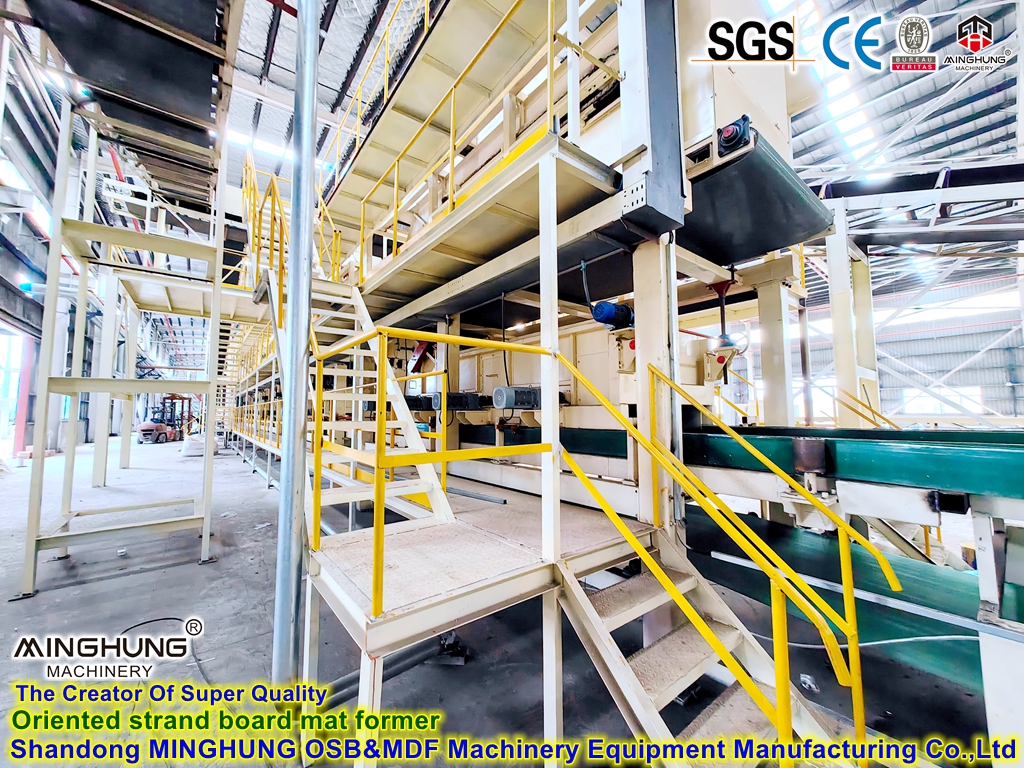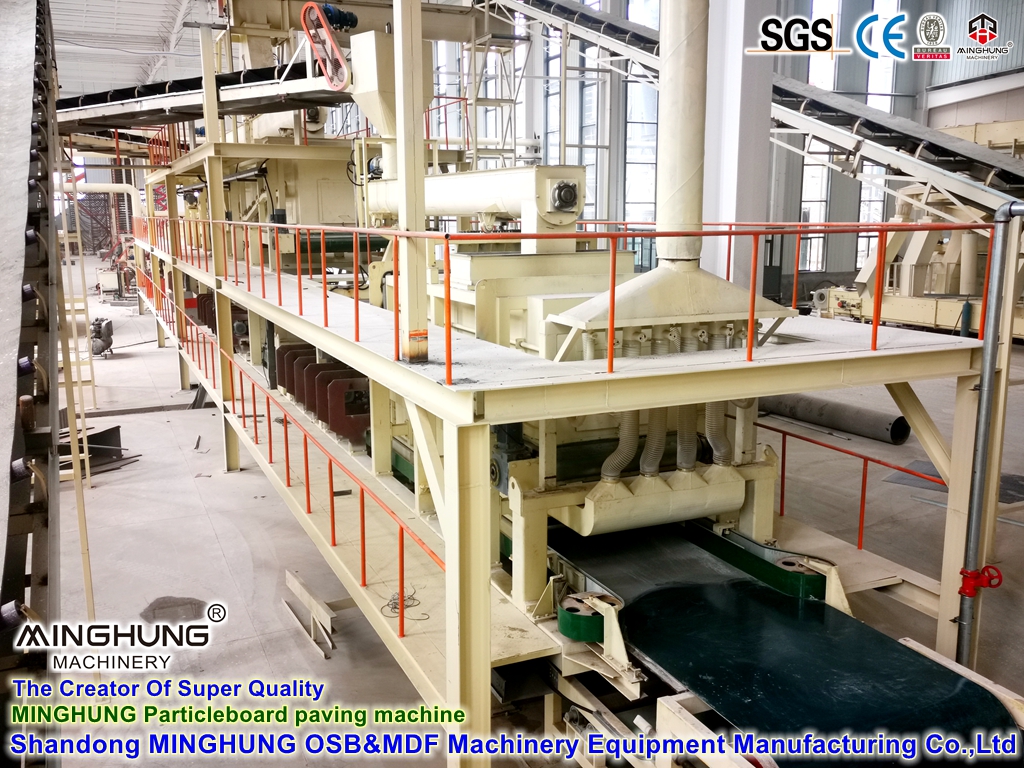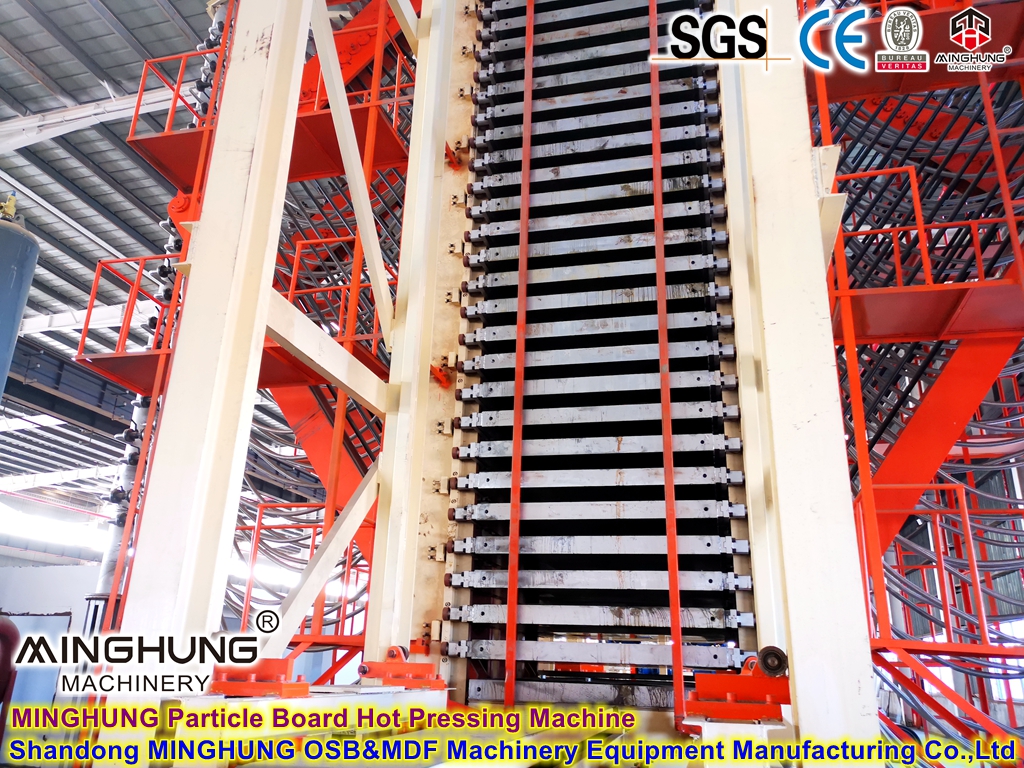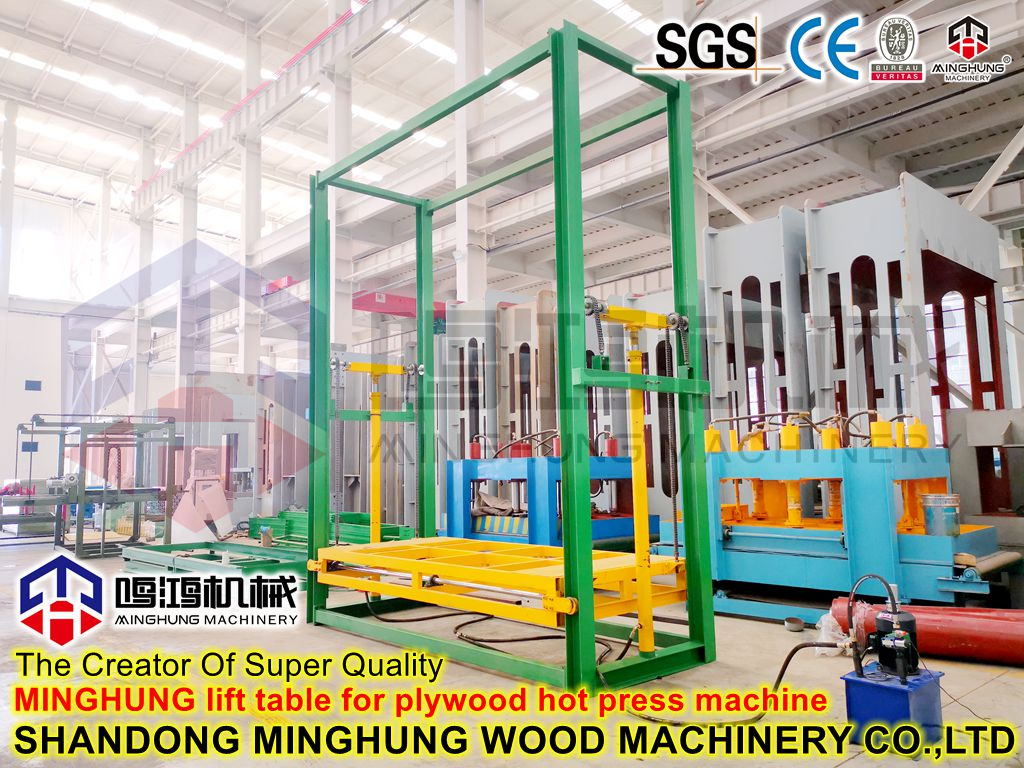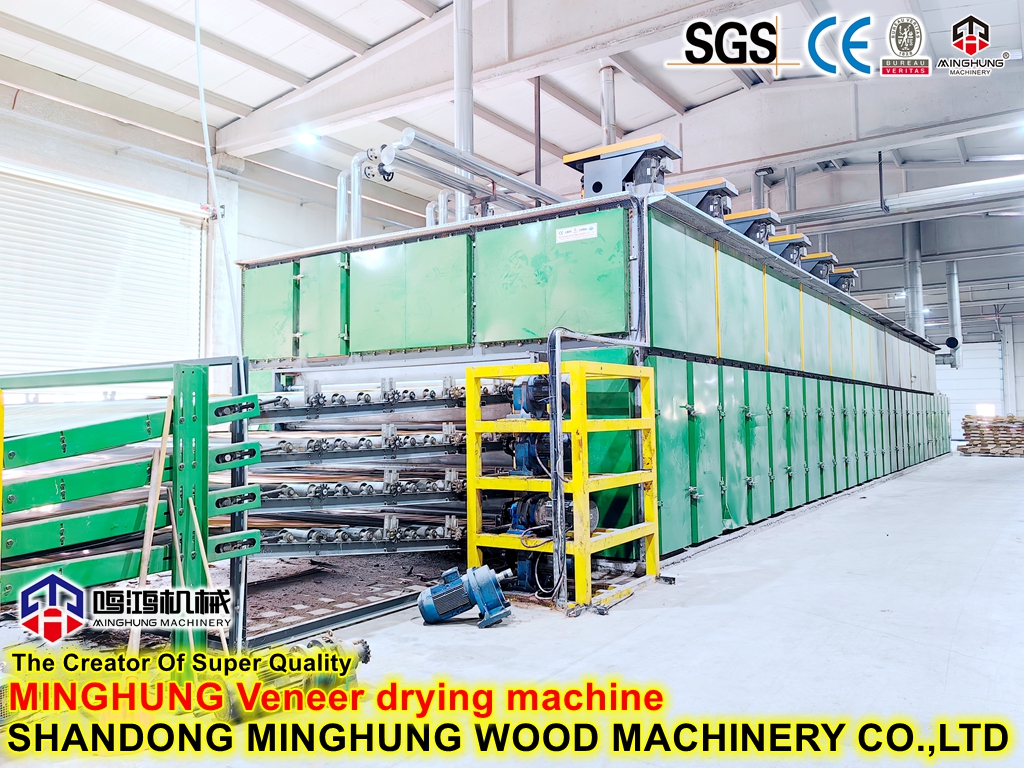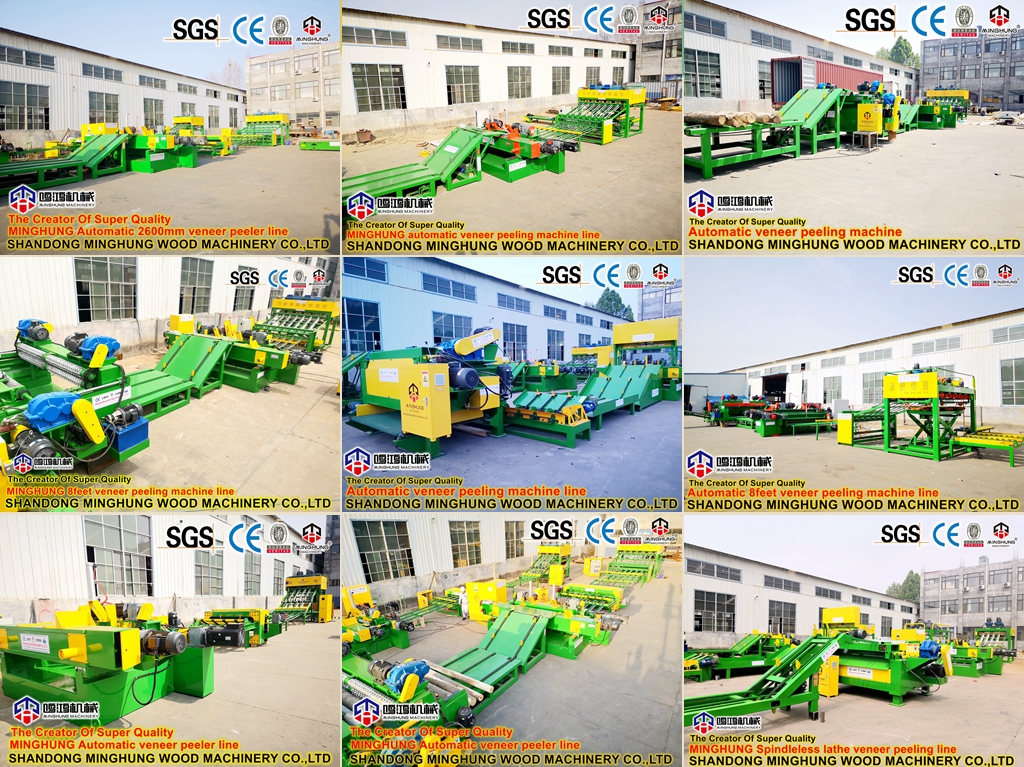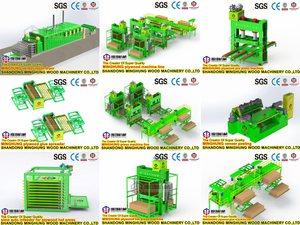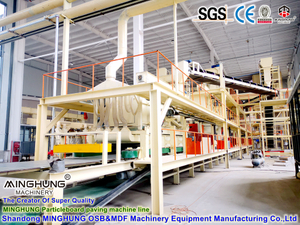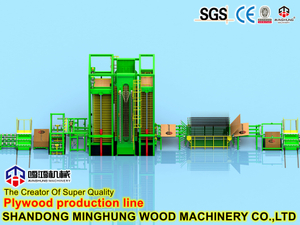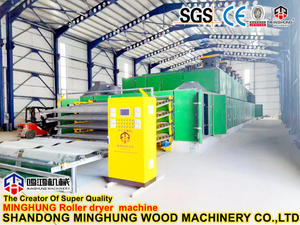Equipment Required for a 1830mm Wide-Width Plywood Production Line
A complete 1830mm wide-width plywood production line includes a full set of equipment from log processing to finished product packing. Below is a detailed introduction to the core production equipment.
 | Part 1: Raw Material Processing & Veneer Preparation Section |
1. Log Cutting Saw
Used to cut purchased logs to the required length (typically 1300mm, 1550mm, 1850mm, etc.), removing irregular sections to prepare them for subsequent peeling.
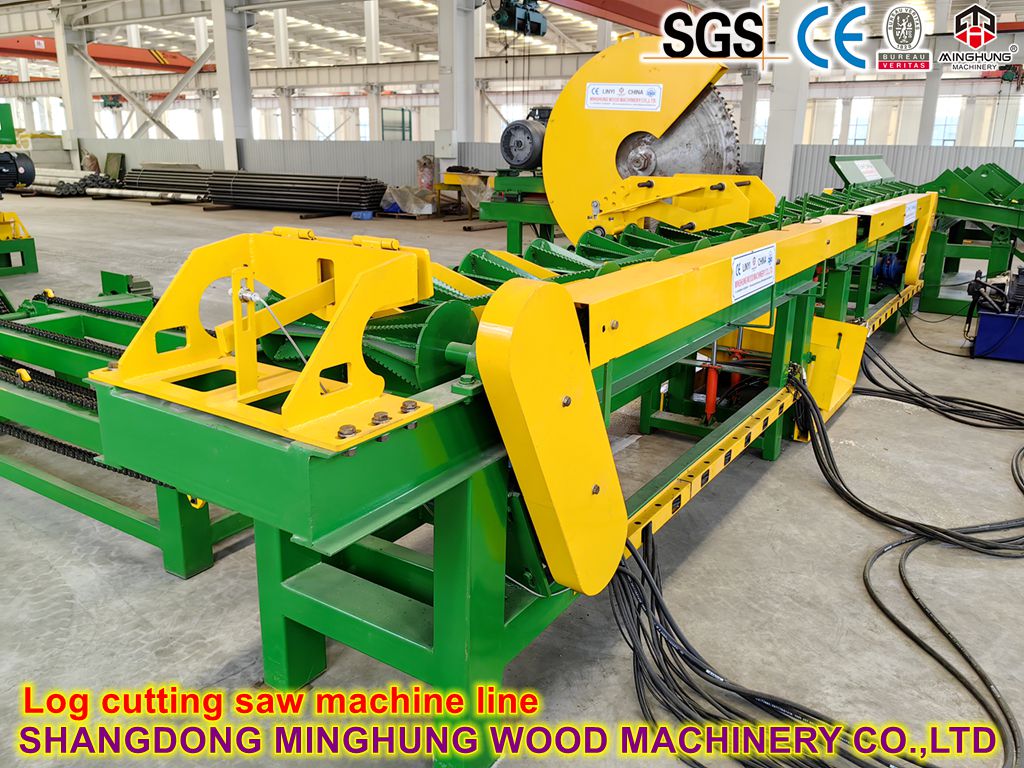
2. Log Debarking Machine
Removes the outer bark from logs through mechanical means. Clean wood protects the peeling blades, improves veneer quality, and reduces abrasive wear from impurities during sanding.
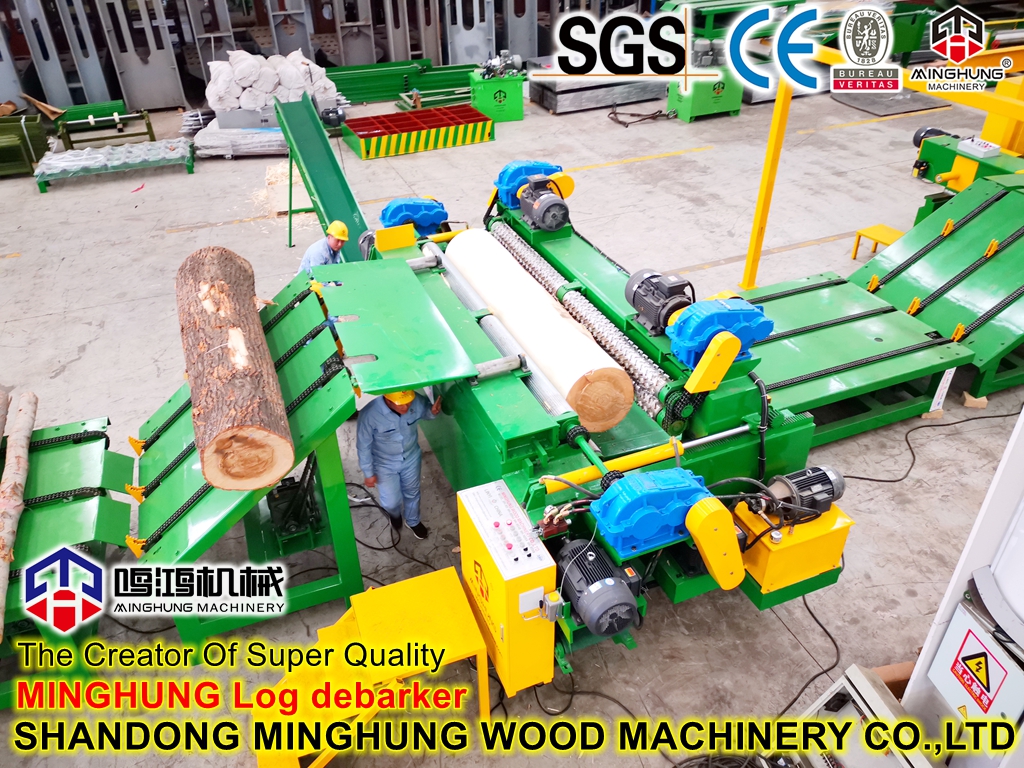
3. Log Steaming Pond/Tank
Subjects the cut log sections to hydro-thermal treatment (steaming) to soften the wood fibers. Steamed logs are easier to peel, producing continuous veneer with a smoother surface and less breakage.
4. Veneer Peeling Lathe
One of the core machines of the production line. It holds the steamed and softened log section and rotates it at high speed while a sharp blade peels it into a continuous strip of veneer with uniform thickness. Its precision directly determines the veneer's thickness and quality.
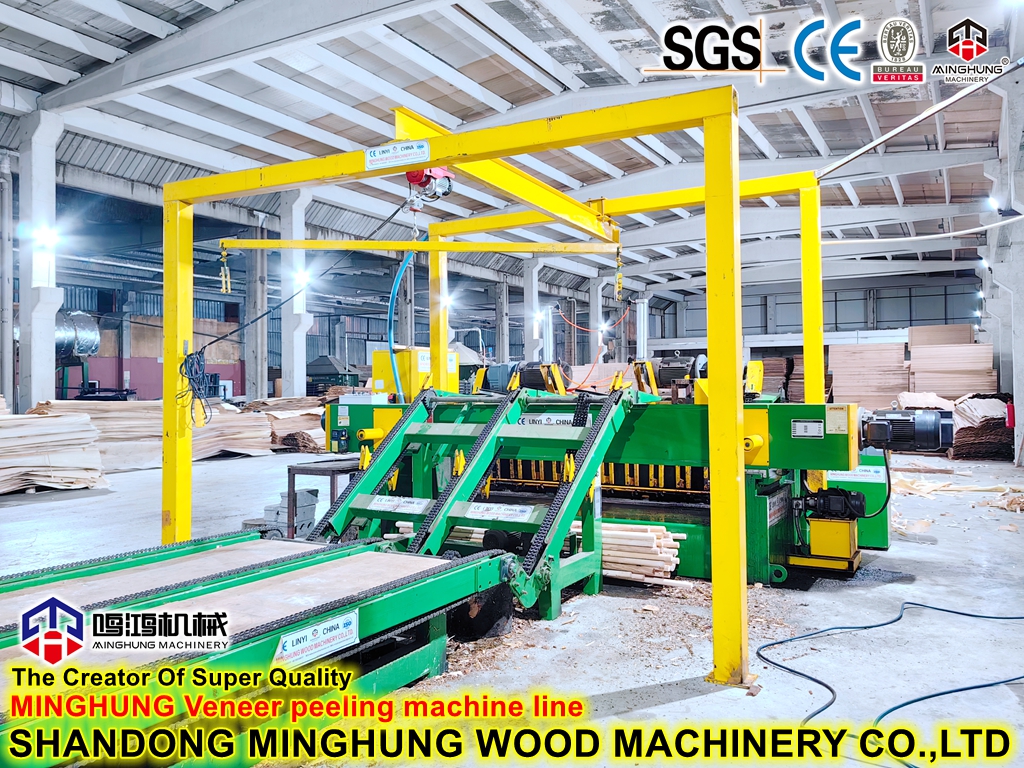
5. Veneer Clipper
Cuts the continuous peeled veneer ribbon to specified dimensions (width and length) and simultaneously clips off defective sections.
 | Part 2: Veneer Drying & Processing Section |
6. Veneer Drying Machine
Dries the wet veneer to reduce its moisture content to an optimal range of 8%-12%. Common types include roller dryers and mesh belt dryers. Dried veneer is less prone to mold, has stable shrinkage, and achieves higher bond strength.
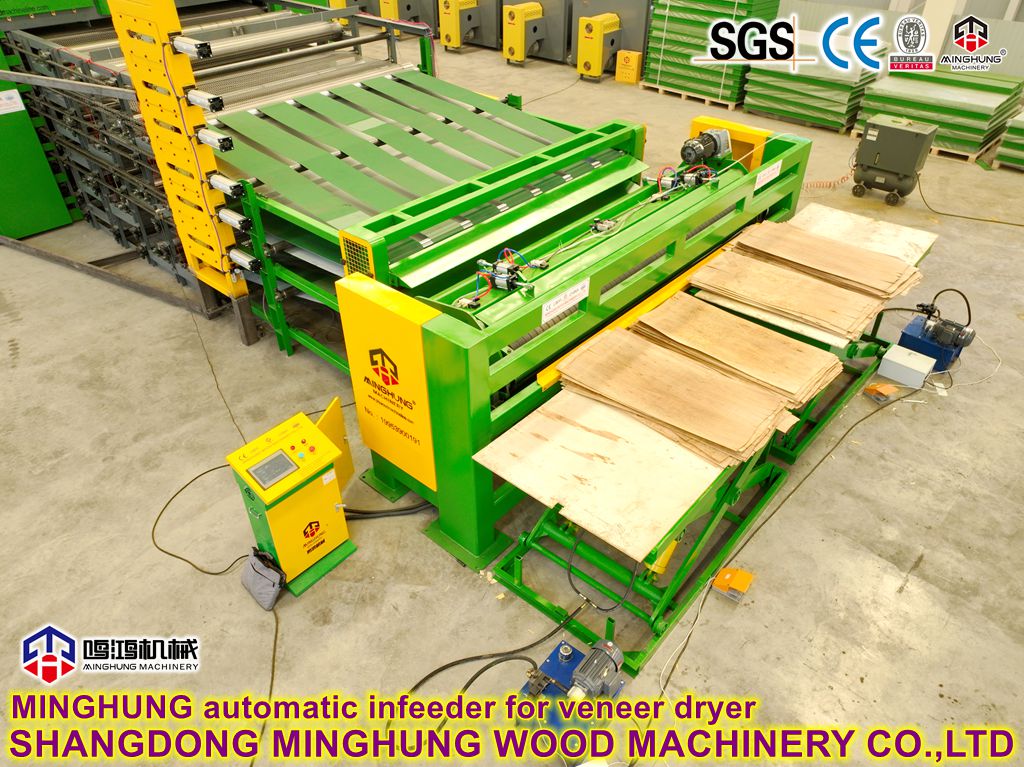
7. Veneer Splicing Machine
Joins small, dried veneer sheets into large full-size sheets (for core and face layers) using glue threads (tape) or scarf joint overlapping. Includes stitch splicers and seam (lap) splicers.
8. Veneer Patching Machine
Used to repair defects such as splits and wormholes in the veneer. Typically, the defective part is removed and a patch is inserted, improving the veneer grade and utilization rate.
 | Part 3: Glue Spreading & Lay-up Section |
9. Glue Spreader
Applies adhesive (e.g., Urea-Formaldehyde UF, Phenol-Formaldehyde PF) evenly onto the surface of the veneer sheets. The core component is the glue roller; its precision determines the uniformity of glue application, directly affecting the plywood's bond strength.
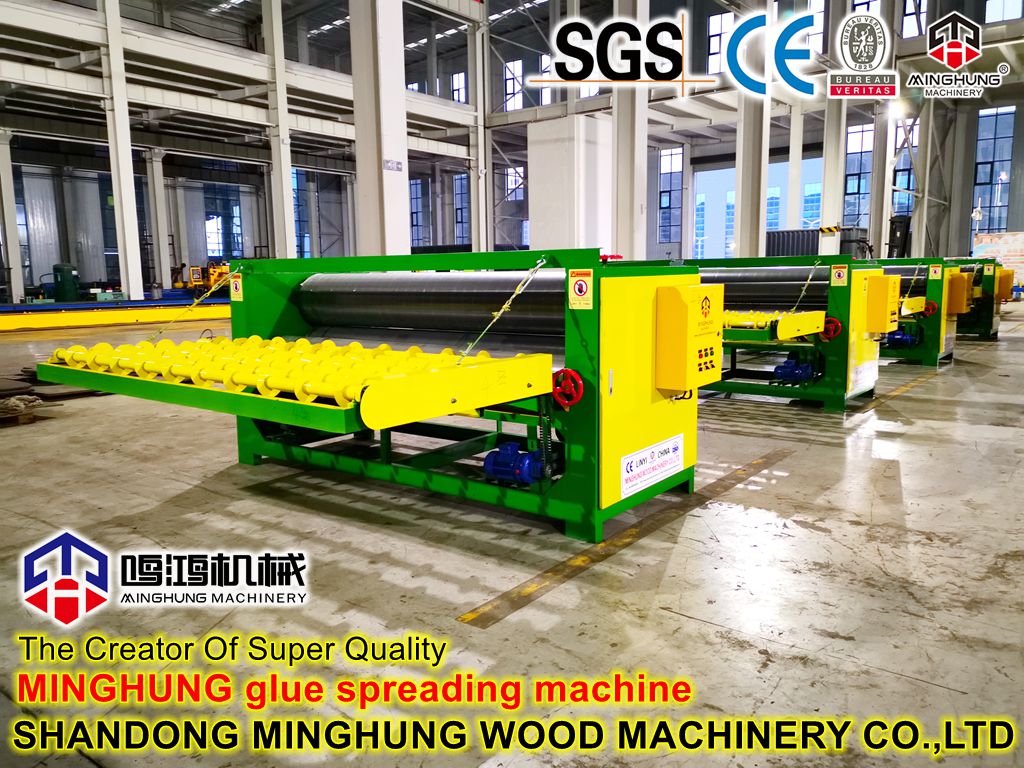
10. Lay-up Line / Pre-press
The glued core piles and multiple veneer layers are stacked manually or automatically into a mat according to a symmetrical structure (e.g., face-core-back). The pre-press then applies cold pressure to the assembled mat, giving it initial bonding strength for easier handling and feeding into the hot press, preventing mat collapse.
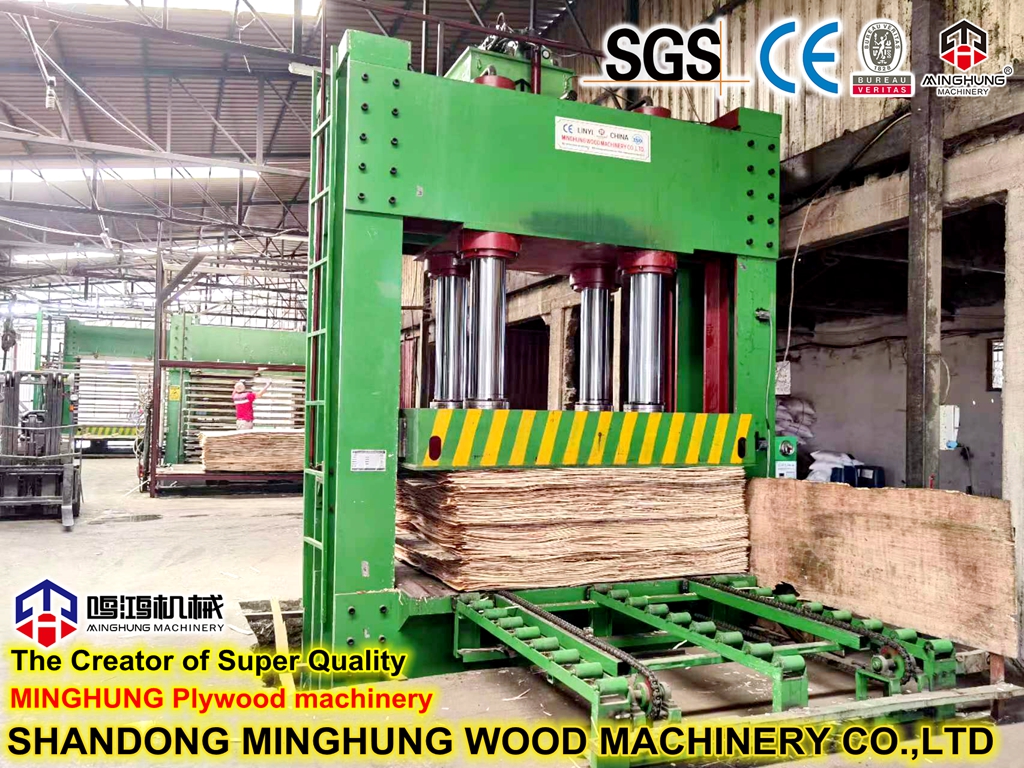
 | Part 4: Hot Pressing & Finishing Section |
11. Hot Press
The most critical equipment in the production line. It applies high temperature and high pressure to the mat, curing the adhesive quickly and bonding the multiple veneer layers firmly together to form plywood. For a 1830mm wide line, the hot platen size is typically larger than 1830mm x 915mm (e.g., 2500mm x 1300mm or more).
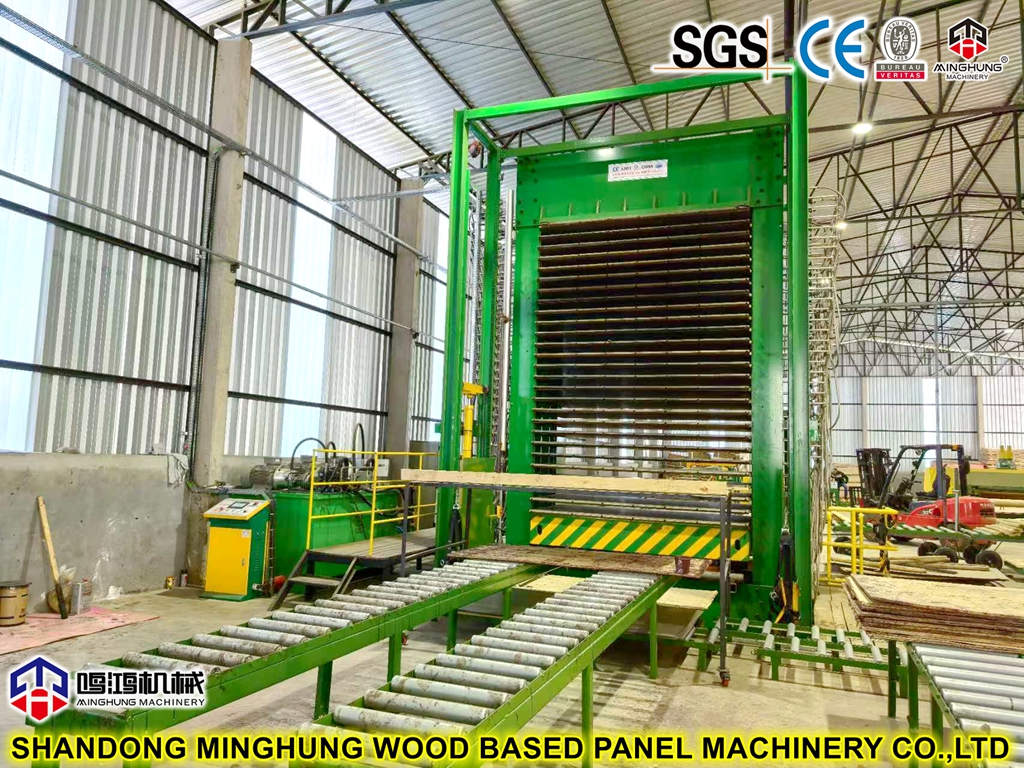
12. Cooling Rack
Cools the hot plywood emerging from the press, either naturally or by forced air. This allows the temperature to decrease uniformly, releasing internal stresses to prevent warping and stabilize the board dimensions.
13. Double Edging Saw
Trims the irregular edges from the cooled, rough-edged plywood sheets, cutting them to standard sizes (e.g., 1830mm x 915mm).
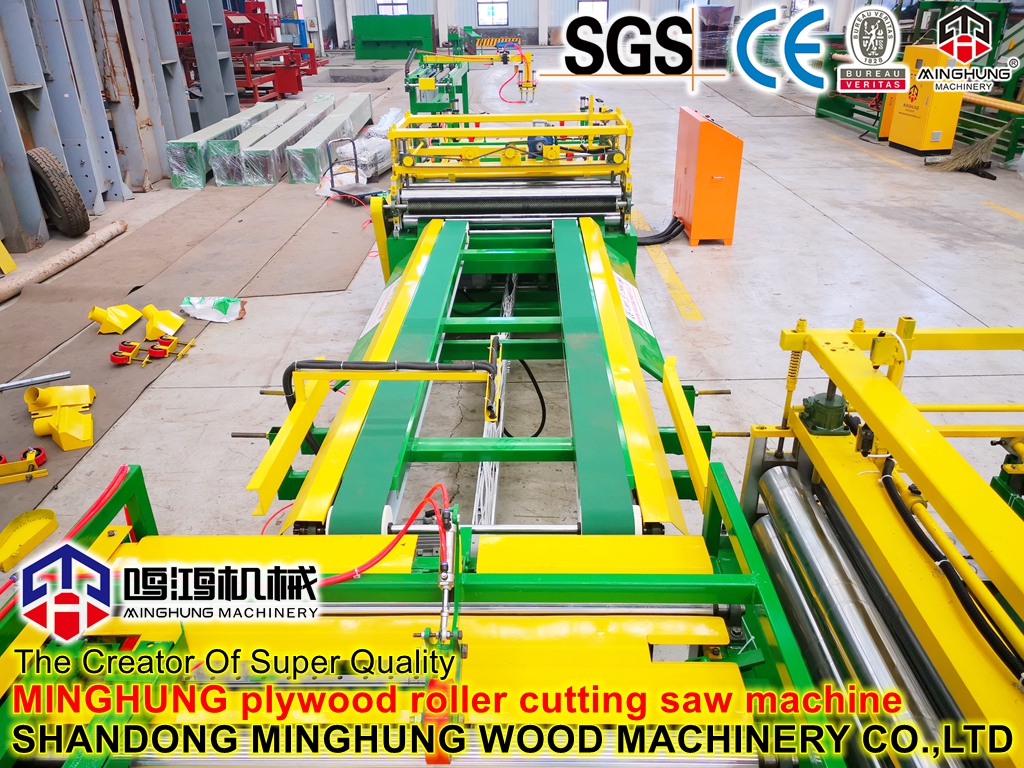
14. Sanding Machine
Sands the surface of the plywood to eliminate thickness variation, pre-cured layers, and minor defects. This achieves the required thickness and smoothness, providing a fine surface for subsequent finishing processes like laminating or painting.
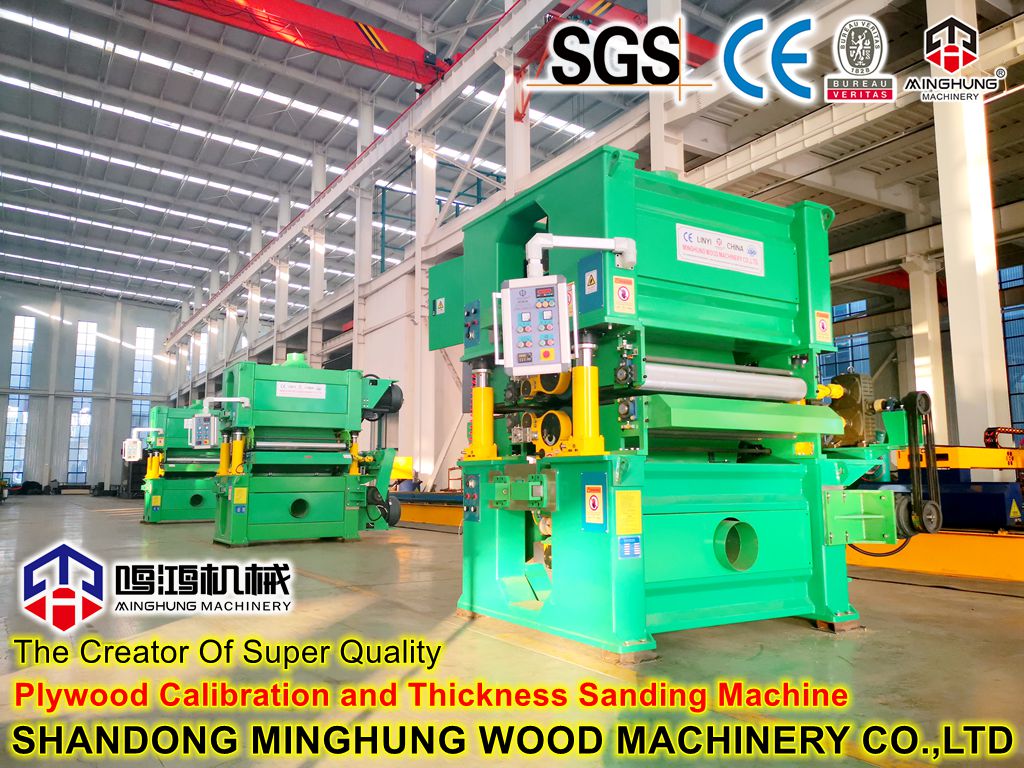
 | Part 5: Auxiliary & Control Systems |
15. Glue Mixing System
Automatically prepares and supplies adhesive, involving the precise measuring and mixing of resin, fillers, hardeners, etc.
16. Dust Removal System
Collects wood chips and dust generated throughout the production process (especially during cutting and sanding), maintaining a clean workshop environment and meeting environmental standards.
17. Automated Control System
Uses PLCs (Programmable Logic Controllers) and HMIs (Human-Machine Interfaces) for centralized control and monitoring of the production line, enabling automated, continuous operation to improve efficiency and ensure consistent quality.
Plywood Manufacturing Process
A complete plywood manufacturing process can be broadly divided into six core stages: Raw Material Processing, Veneer Preparation, Veneer Drying, Gluing & Lay-up, Hot Pressing, and Finishing.
 | Stage 1: Raw Material Processing |
1. Log Cutting
Purchased logs are cut to the target length (e.g., 1300mm, 1550mm, 1850mm) using a cross-cut saw based on the desired final product size.
2. Debarking
The outer bark of the logs is removed using a debarking machine to prevent bark from wearing down equipment blades and affecting veneer quality.
3. Steaming
The cut log sections (blocks) are placed in hot water ponds or steaming vats for heat treatment. This softens the wood fibers, allowing the logs to be peeled into continuous, smooth veneer with minimal breakage in the subsequent step.
 | Stage 2: Veneer Preparation |
4. Peeling / Lathe Turning
This is a critical process. The softened log block is mounted on a lathe and rotated at high speed against a sharp blade, which peels it into a continuous sheet of veneer. Precise control allows for veneer of different thicknesses (e.g., 1.2mm-4.5mm) to be produced.
5. Clipping
The continuous veneer ribbon is clipped to preset widths and lengths. Defective sections (e.g., with knots or splits) are manually or automatically identified and cut out.
 | Stage 3: Veneer Drying & Processing |
6. Drying
Freshly peeled veneer has a very high moisture content (approx. 30%-60%) and must be dried. Typically, roller or mesh belt dryers are used to reduce the moisture content to an optimal range of 8%-12%. Dried veneer is less prone to mold, has stable shrinkage, and achieves higher bond strength.
7. Grading, Patching & Splicing
Grading: Veneer sheets are sorted based on wood species, color, and number of defects. High-quality veneer is used for face and back layers, while lower grades are used for the core.
Patching: Minor defects (e.g., small wormholes, splits) are repaired using a patching machine to improve yield.
Splicing: Smaller veneer sheets are joined into full-size sheets using splicers (e.g., thread stitching or scarf jointing) for use as core or back layers.
 | Stage 4: Gluing & Lay-up |
8. Glue Spreading
Adhesive (e.g., Urea-Formaldehyde UF, Phenol-Formaldehyde PF, Melamine MEL) is applied evenly to both sides of the core veneer layers (or all layers that require glue) using a glue spreader. The amount of glue applied must be precisely controlled.
9. Lay-up & Pre-pressing
Lay-up: The glued core piles and unglued face/back veneers are assembled manually or automatically into a "mat" with a symmetrical structure (e.g., face-core-back, or more layers). The grain direction of adjacent layers is perpendicular.
Pre-pressing: The assembled mat is cold-pressed to give it initial bonding strength, making it easier to handle and load into the hot press without collapsing.
 | Stage 5: Hot Pressing |
10. Hot Pressing
This is the most critical process in the entire production line. The mat is loaded into a multi-opening hot press where it is subjected to high temperature (e.g., 140-200°C) and high pressure (e.g., 100-200 kg/cm²) for a set time.
The heat cures the adhesive rapidly, and the pressure bonds the veneer layers firmly together into a strong plywood panel. Pressure, temperature, and time must be precisely set according to the adhesive type and panel thickness.
11. Cooling
The panels exiting the hot press are very hot. They are placed on cooling racks for natural or forced cooling to release internal stresses, stabilize dimensions, and prevent warping.
 | Stage 6: Finishing |
12. Trimming
The irregular, pressed edges on all four sides of the cooled panels are sawed off by a double-edging saw to create panels of standard, squared dimensions.
13. Sanding
The top and bottom surfaces of the panels are sanded by a wide-belt sander. This process eliminates thickness variation, pre-cured surface layers, and minor imperfections, achieving the required thickness tolerance and smoothness.
14. Grading & Inspection
Finished panels are inspected and graded according to national (e.g., GB/T 9846) or international standards based on appearance defects (e.g., holes, splits, glue failure), into grades like Premium, First Grade, and Qualified.
15. Packaging & Storage
Panels of the same grade and specification are bundled, labeled with information such as size, grade, formaldehyde emission class (e.g., E0, E1), and production date, and then moved to storage or prepared for shipment.
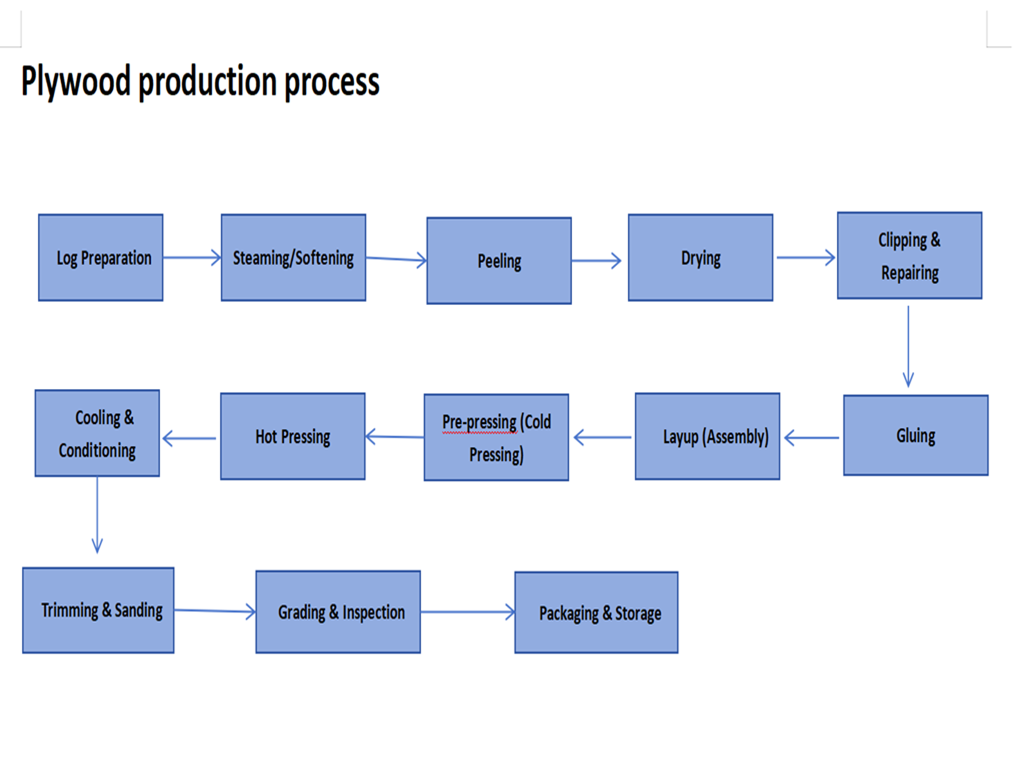
Introduction to the 1830mm Width
The "1830mm width" is a critical specification term in the plywood manufacturing industry, specifically referring to the standard width of the plywood sheets produced by a production line being 1830 millimeters. This dimension is not arbitrary but is based on internationally recognized panel standards and optimized for production efficiency.
 | 1. Core Dimensions and Correlation |
Width: 1830 millimeters (mm)
Corresponding Length: Typically paired with a length of 915 millimeters (mm).
Standard Specification: Therefore, a full-size finished plywood sheet is usually 1830mm (width) x 915mm (length).
Imperial Equivalent: This size perfectly corresponds to the imperial measurement of 6 feet x 3 feet (1 foot ≈ 305mm, 6x305=1830, 3x305=915). This makes this specification highly popular and common in international trade, especially in markets using imperial units (e.g., North America, the UK).
 | 2. Why is the 1830mm Width Important? |
Standardization & Universality: The 6x3 feet dimension is one of the long-standing standard sizes in construction, furniture, and packaging industries globally. Equipment, molds, and designs are built around this spec. A 1830mm production line directly meets this significant market demand.
High Material Utilization: The continuous veneer ribbon peeled by a modern lathe has a fixed width. Designing the production line for a 1830mm width maximizes the use of the log's peeling diameter, minimizes cutting waste, and significantly improves yield and economic efficiency.
Downstream Application Compatibility:
Construction Formwork: This size is very suitable for formwork dimensions in construction, facilitating easy installation and assembly.
Furniture Manufacturing: The dimensions of many panel furniture components are integer divisions of this size, effectively reducing cutting waste.
Packaging Cases: Standard sizes for large packaging cases and pallets are often designed based on this specification.
Foundation for Production Line Automation: The working width of the entire production line's machinery—such as the hot press, sander, and edge trimming saw—is designed around 1830mm (or larger, to allow margin), enabling automated production from log to finished product.
 | 3. Comparison with Larger Widths (e.g., 2440mm / 8 feet) |
1830mm (6 feet): Represents a classic and economical specification. Equipment investment is relatively lower, requirements for log diameter are less stringent, making it ideal for medium-scale production and manufacturers targeting specific markets.
2440mm (8 feet): Represents the mainstream and large-scale production specification (often paired with a length of 1220mm, i.e., 4 feet). It is the absolute mainstream size in the global panel market (especially for core stock in furniture and decoration), but requires larger equipment, bigger log diameters, and higher capital investment.
The 1830mm width represents a mature, efficient, and well-targeted production line standard. It precisely serves the international market for the 6x3 feet standard size, striking an optimal balance between investment cost, raw material utilization, and market demand.

